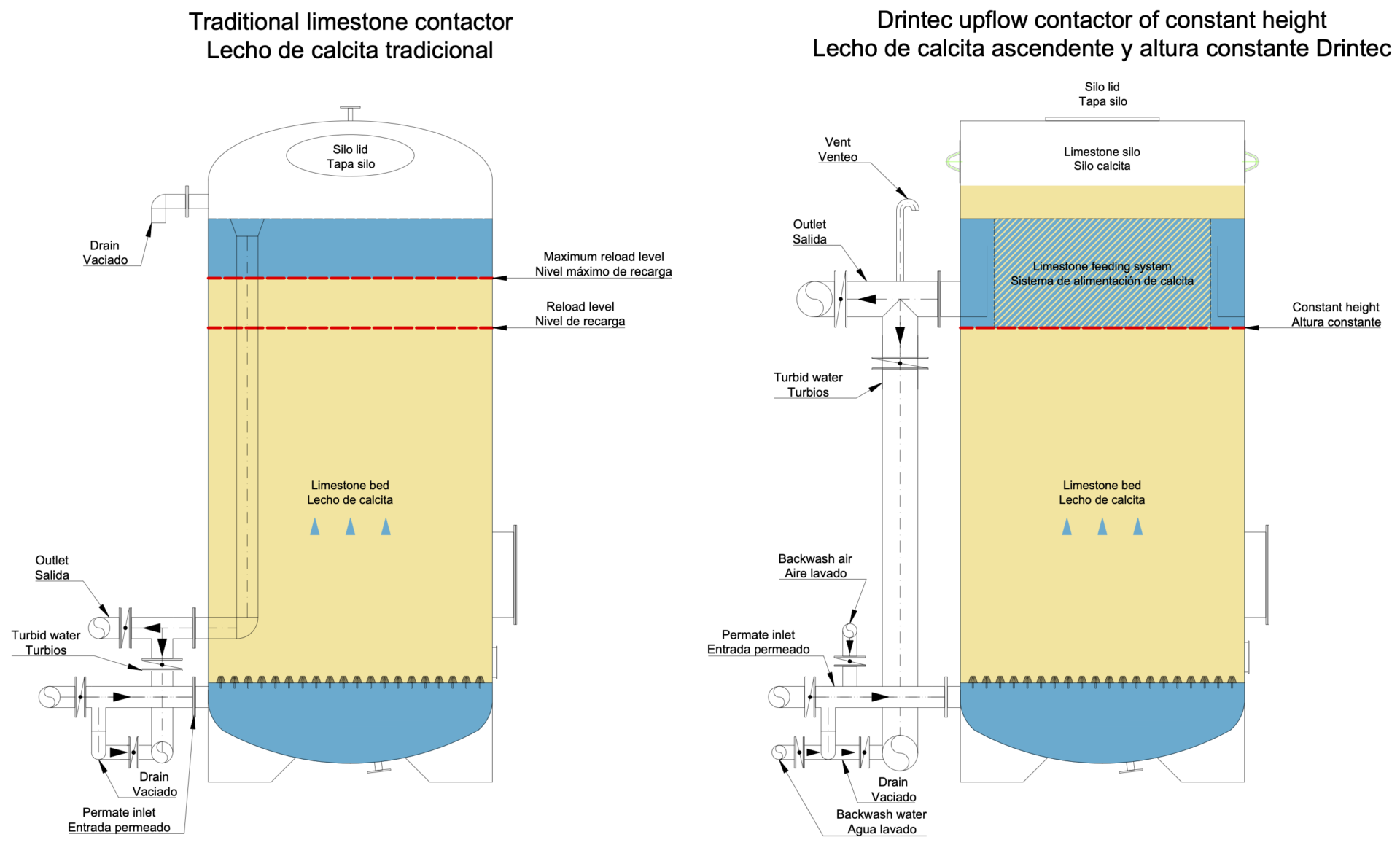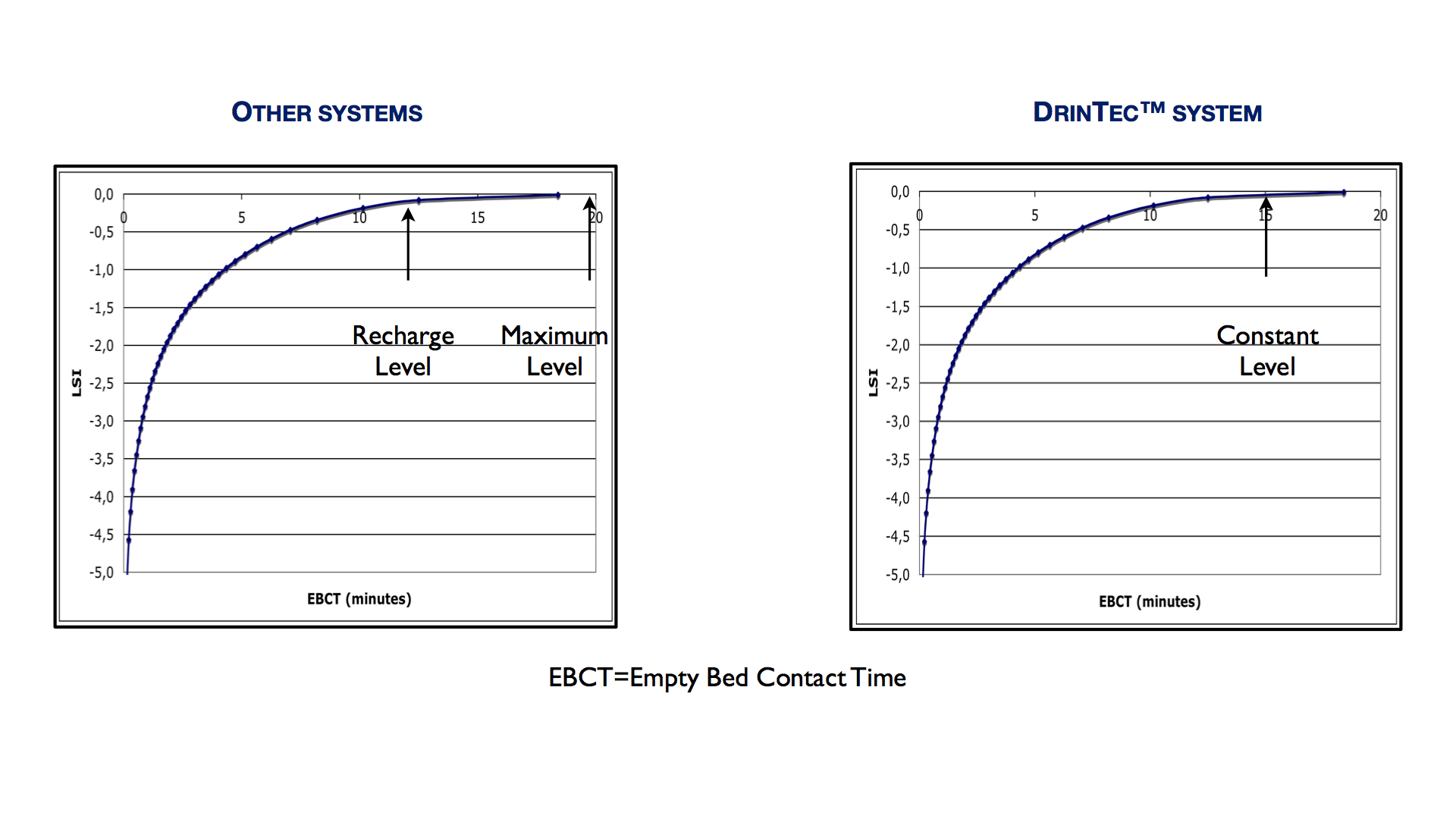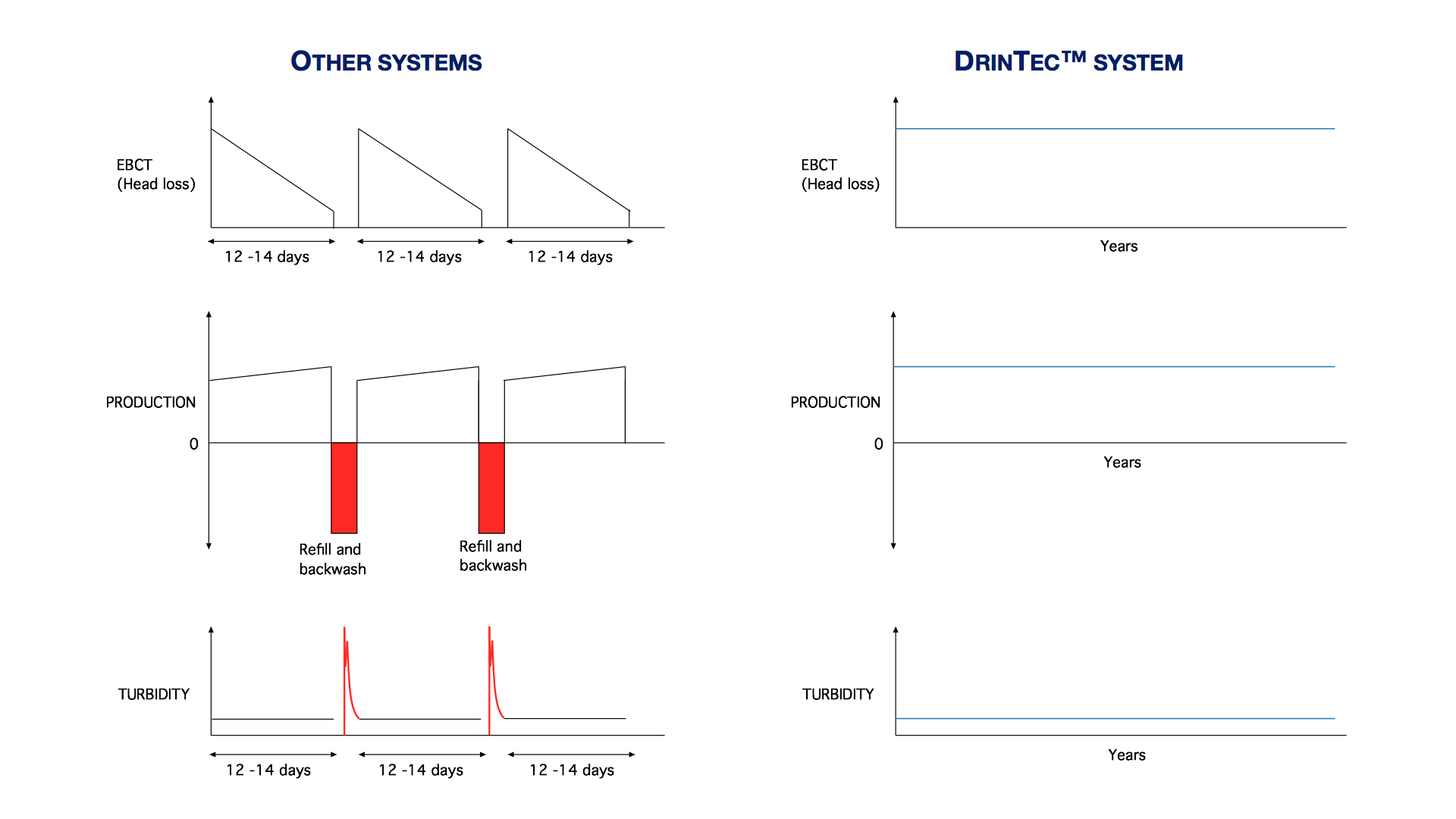- Home
- /
- Applications
- /
- Advantages of Drintec™ Upflow Contactors
Drintec™ Upflow Limestone Contactors vs Traditional Limestone Contactors
Main advantages and disadvantages of Drintec™ Upflow Contactors.
| Contactor type | Advantages | Issues to consider |
|---|---|---|
| DrinTec™ upflow contactors of constant height |
|
|
Main advantages and disadvantages of Traditional Limestone Contactors.
| Contactor type | Advantages | Issues to consider |
|---|---|---|
| Traditional Limestone Contactors |
|
|
Diagram showing differences between Drintec™ Upflow Limestone Contactors vs Traditional Limestone Contactors





